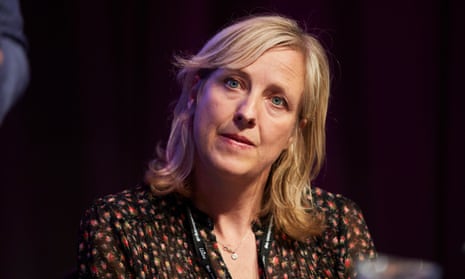Online violence against female journalists is one of the most serious global threats to press freedom and has contributed to female reporters being murdered, according to researchers behind a new global report.
Academics who interviewed over 1,000 female journalists in 15 countries found the vast majority of journalists who took part had suffered from online abuse and threats.
They urged social media companies to overhaul algorithms that have been found to drive hate against women, and for perpetrators of gender-based online violence to be de-platformed and penalised.
The authors of The Chilling are calling for governments, as well as the news industry and the giant tech corporations, to do more to tackle what they say is “a crisis of online violence towards women journalists”.
The report illuminates the evolving challenges faced by female journalists dealing with prolific and sustained online violence around the world. It calls out “the victim-blaming and slut-shaming that perpetuates sexist and misogynistic responses to offline violence against women in the online environment, where patriarchal norms are being aggressively reinforced.”
Among the interviewees was award-winning investigative Guardian and Observer journalist Carole Cadwalladr, who exposed how personal data belonging to millions of Facebook users was secretly collected by British consulting firm Cambridge Analytica, largely for political advertising.
The team’s analysis found that Cadwalladr was the target of 10,400 separate instances of obvious abuse between December 2019 and January 2021.
It found that the abuse was highly gendered and designed to “humiliate, belittle and discredit” the journalist on both a personal and professional level.
Cadwalladr told researchers how “a few hundred years ago I would have been burned at the stake” and how she has become a “national punching bag”.
The report, which is based on research by the International Centre for Journalists (ICFJ) and the University of Sheffield, also maps the online-offline violence trajectory, showing how digital harassment and threats beget offline attacks. It highlights the murder of Mexican journalist María Elena Ferral, who denounced online harassment from the son of a city mayor before she was killed.
Prof Kalina Bontcheva, senior researcher in the UK arm of the study, said: “Our report has found that we are now at a crisis point in the level of violence being directed towards women journalists.
“The vast majority who took part in the study had suffered from online violence, so UK policymakers need to take urgent action now in order to protect the lives of those who are doing such an important job in society.”
after newsletter promotion
Bontcheva called for the much-delayed online safety bill to be passed urgently as the report laid out a series of other recommendations.
The UK arm of the research found that online violence against female journalists is frequently associated with polarising political debates – such as that surrounding Brexit – and that the Covid pandemic has worsened the situation for female journalists.
Globally, the research found that nearly three-quarters of the female journalists surveyed had experienced online violence in the course of their work.
Threats of physical violence, including death threats, were identified by 25% and sexual violence by 18%.
And 13% described threats of violence against those close to them, including children and infants.
Almost half – 48% – of the female journalists surveyed reported being harassed with unwanted private social media messages.
